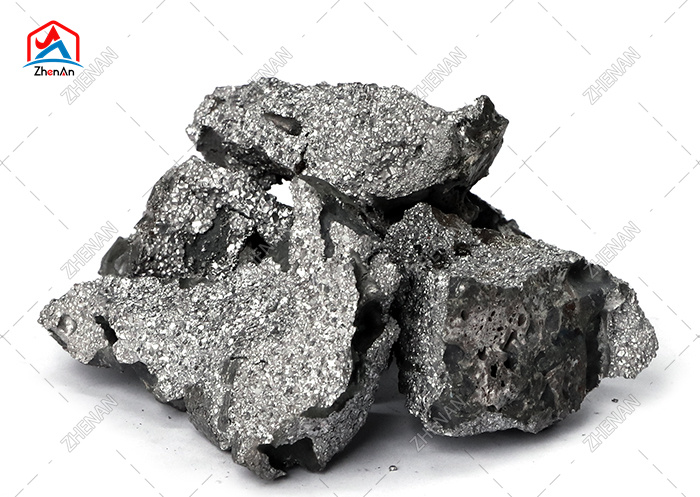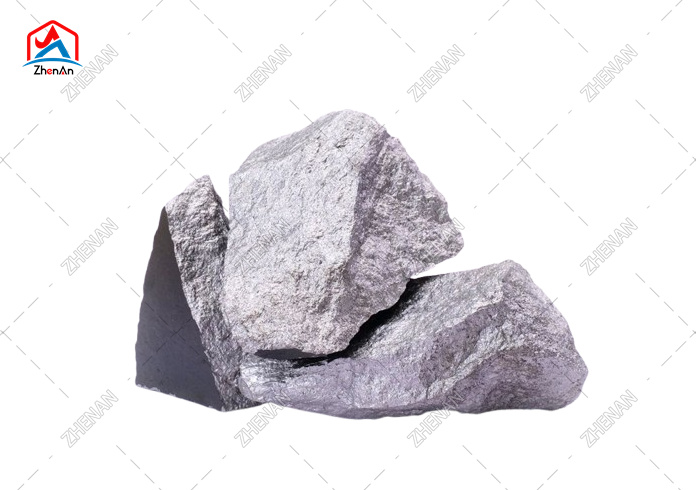In the modern steel industry, the addition of alloying elements is essential to improve the performance of steel. Chromium, as an important alloying element, can significantly improve the corrosion resistance, wear resistance and high-temperature performance of steel. Low-carbon ferrochrome, with high chromium and low carbon, ensures the chromium content and controls the carbon content. It is an effective alloy additive for smelting stainless steel, alloy steel and special steel.
What is low-carbon ferrochrome?
Low-carbon ferrochrome is an iron alloy with high chromium content and low carbon content. The chromium content is usually between 65%-72%, and the carbon content is controlled between 0.1%-0.5%. Compared with high-carbon ferrochrome (carbon content>4%) and medium-carbon ferrochrome (carbon content of about 2%-4%), the most notable feature of low-carbon ferrochrome is its extremely low carbon content.
Chemical composition of low-carbon ferrochrome
In addition to the main elements chromium and iron, low-carbon ferrochrome usually contains small amounts of silicon, sulfur, phosphorus and other elements. The general standard composition is as follows:
- Chromium (Cr): 65%-72%
- Carbon (C): ≤0.5% (usually between 0.1%-0.5%)
- Silicon (Si): ≤1.5%
- Sulfur (S): ≤0.04%
- Phosphorus (P): ≤0.04%
- Iron (Fe): Balance
Physical properties of low-carbon ferrochrome
Low-carbon ferrochrome has a high melting point (about 1550-1650℃), a density of about 7.0-7.5 g/cm³, a silver-gray metallic luster, high hardness, and good thermal and electrical conductivity. Compared with other ferrochrome alloys, low-carbon ferrochrome has a low carbide content, which is conducive to improving its dissolution rate and utilization rate in molten steel.
Production process of low-carbon ferrochrome
Traditional smelting method
Traditional low-carbon ferrochrome production mainly adopts high-carbon ferrochrome decarburization method, including silicon thermal method and aluminum thermal method. These methods first produce high-carbon ferrochrome, and then reduce the carbon content through an oxidative decarburization process. However, these methods are energy-intensive, costly, and have a significant impact on the environment.
Modern process improvements
In recent years, with the development of technology, new processes such as direct reduction and plasma smelting have been gradually applied to the production of low-carbon ferrochrome. These new processes not only improve product quality, but also significantly reduce energy consumption and environmental pollution:
1. Direct reduction method: Using solid reducing agents (such as carbon, silicon, aluminum, etc.) to directly reduce chromium ore at a lower temperature can effectively control the carbon content.
2. Plasma smelting method: Using high-temperature plasma as a heat source, the smelting temperature and atmosphere can be precisely controlled to produce ultra-pure low-carbon ferrochrome.
3. Electrolysis method: Chromium is extracted from chromium ore through an electrolytic process, and then alloyed with iron to obtain ferrochrome alloys with extremely low carbon content.
Advantages of low-carbon ferrochrome
The core advantage of low carbon content
The most prominent advantage of low-carbon ferrochrome is its low carbon content, which brings many metallurgical and application benefits:
1. Avoid excessive carbide formation: Too high carbon content in steel will form a large amount of carbides, affecting the plasticity and toughness of steel. Using low-carbon ferrochrome can accurately control the carbon content in steel and avoid unnecessary carbon introduction.
2. Improve the purity of steel: The low content of impurity elements in low-carbon ferrochrome helps to produce high-purity, high-quality special steel.
3. Improve the processing performance of steel: Low carbon content reduces the formation of hard carbides and improves the hot and cold processing performance of steel.
4. Reduce the difficulty of steel welding: Low carbon content significantly improves the welding performance of chromium-containing steel and reduces cracks and embrittlement during welding.
Advantages of metallurgical process
1. Fast dissolution rate: The dissolution rate of low-carbon ferrochrome in molten steel is much faster than that of high-carbon ferrochrome, which is conducive to shortening smelting time and improving production efficiency.
2. High chromium recovery rate: Due to its good solubility, the recovery rate of chromium added by using low-carbon ferrochrome can usually reach more than 95%, which is higher than that of using high-carbon ferrochrome.
3. Accurate control of composition: Low-carbon ferrochrome is conducive to more accurate control of the chemical composition of the final steel, especially for special steels with strict requirements.
4. Reduce decarburization process: The use of low-carbon ferrochrome can reduce or omit the decarburization process of molten steel, simplify the production process, and reduce energy consumption.
Economic benefits and environmental advantages
1. High added value: Although the price of low-carbon ferrochrome is higher than that of high-carbon ferrochrome, it can create higher added value in the production of high-end steel.
2. Energy saving and emission reduction: The use of low-carbon ferrochrome can reduce energy consumption and carbon emissions in the decarburization process of molten steel.
3. Increase the service life of steel: Steel produced with low-carbon ferrochrome has a longer service life, which indirectly reduces resource consumption and environmental impact.
Application of low carbon ferrochrome in the steel industry
Stainless steel production
Stainless steel is the most important application area of low carbon ferrochrome. In stainless steel production, low carbon ferrochrome is mainly used for:
1. Austenitic stainless steel: such as 304, 316 and other series of stainless steel, the use of low carbon ferrochrome helps to control the carbon content and avoid intergranular corrosion problems.
2. Ferritic stainless steel: such as 430, 439 and other series, low carbon ferrochrome helps to improve the stamping performance and corrosion resistance of steel.
3. Duplex stainless steel: such as 2205 and other series, low carbon ferrochrome helps to maintain the appropriate phase ratio and excellent comprehensive performance.
4. Ultra-low carbon stainless steel: high-end stainless steel with a carbon content of less than 0.03%, low carbon ferrochrome must be used to ensure that the carbon content of the final product meets the standard.
Special steel production
1. High temperature alloy steel: used for high temperature components such as aircraft engines and gas turbines,
low carbon ferrochrome can provide enough chromium without introducing too much carbon.
2. Bearing steel: High-quality bearing steel requires precise control of carbon content. The use of low-carbon ferrochrome can ensure the hardness and wear resistance of steel.
3. Mold steel: High-grade mold steel requires both hardness and toughness. The use of low-carbon ferrochrome helps improve the heat treatment performance of mold steel.
4. Spring steel: Adding low-carbon ferrochrome can improve the fatigue strength and service life of spring steel.
High-temperature heat-resistant materials
1. Heat-resistant cast steel: Used for high-temperature valves, pump housings and other parts. The use of low-carbon ferrochrome helps improve its high-temperature strength and oxidation resistance.
2. Heat-resistant alloys: Such as nickel-based and cobalt-based heat-resistant alloys, low-carbon ferrochrome is an important source of alloying elements.
As an important ferroalloy material, low-carbon ferrochrome plays an irreplaceable role in the steel and metallurgical industry with its core advantage of low carbon content. It is not only a key raw material for the production of high-quality stainless steel and special steel, but also widely used in high-end manufacturing fields such as chemical industry, power, aerospace, etc.

